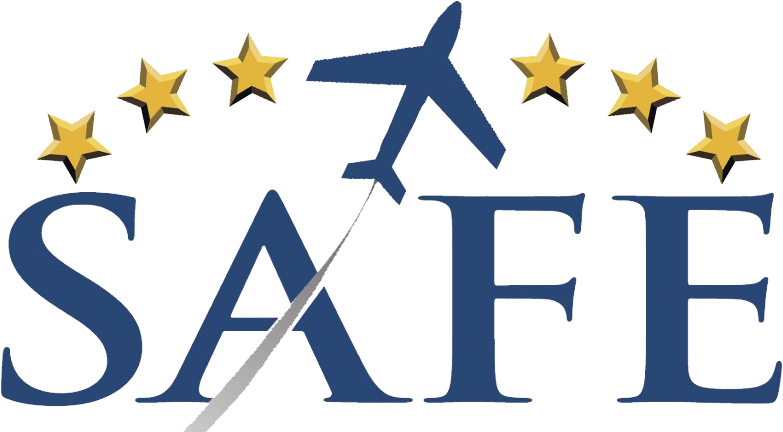OK, let’s be honest, a human really cannot multi-task (simultaneously perform two tasks demanding intense concentration). Sad but true, neuroscientists have clearly proven this. Here are some great exercises to make sure you truly believe this. It is especially important to embrace this truth in our world of technological distraction. We all still see people texting and driving who are not yet believers and natural selection will probably soon remove them from the gene pool.
 What we *can* do is rapidly share attention between essential tasks. The only time rapid task switching (or scan) is recommended is when these competing demands are equally important. Then prioritizing and triage are impossible. Think of an instrument scan, “you mean I have to maintain heading *and* altitude?” This article suggests a useful method to execute cognitive time-sharing I have found useful while piloting.
What we *can* do is rapidly share attention between essential tasks. The only time rapid task switching (or scan) is recommended is when these competing demands are equally important. Then prioritizing and triage are impossible. Think of an instrument scan, “you mean I have to maintain heading *and* altitude?” This article suggests a useful method to execute cognitive time-sharing I have found useful while piloting.
If several tasks are demanding immediate attention we first must carefully sort out the “most important” from the “urgent” and avoid getting caught in mere “busy.” That is why we emphasize the classic (and valuable) order of operation “aviate, navigate, communicate.” This is prioritizing and all items must be accomplished. We also must occasionally “triage” a word from medical emergency operations. This is also handling the most important and manageable emergency first but also picking your battles and ignoring some demands. Sometimes we have to shove less important (or impossible) tasks off the table or develop a strategy and advocate for a delay or diversion.
One reason prioritizing and triage can be especially frustrating for pilots is our almost genetic striving for perfection. And though this is a wonderful goal and continuous improvement is very desirable attribute, we don’t often, if ever, achieve perfection in this world. The impulse for perfection, if not controlled, can paralyze effective action and lead to unsafe operations (future article) since we try to do everything and nothing works. The perfect is indeed the enemy of the good. Our goal during intense pilot workload demands is to achieve the “most good” or “best solution given the circumstances.” (More on aeronautical decision making)
For equally important items, the scan I recommend in piloting is called “micro, macro, meta.” This method requires continuous shifting of our level of detail. Let’s say we are setting up an approach. Assume our plane is in stable flight so we carefully attend to a detailed operation (micro) e.g. selecting the desired approach in your GPS while hand flying. Almost immediately we expand your focus to “macro” to monitor and tweak any aircraft control issues. Just like an instrument scan it is essential not to fixate on any level of detail but continuously shift our focus in and out (like a lens) and check the different pictures e.g. “are we on course and at altitude?” With practice, this cognitive scan of micro/macro can continue several times to achieve a detailed set-up without losing the bigger picture of control. Essential is an internal alert timer that prevents fixation. After several oscillations between “micro” and “macro” I encourage “meta” to check the larger overview. This is the more global scan or “situational awareness.” Does the whole picture make sense? e.g. we may be on course, at altitude (macro) and I have everything set-up (micro) *but* does it make sense to be continuing this flight into convective through a cold front? These levels are presented in no particular order and starting big is probably the obvious choice. Most important is a continuous cycle of changing attention without fixating at any focus level.
 The “meta” here is short for “meta-cognitive” which is the essential functioning of our “higher order thinking skills” or HOTS found in Bloom’s taxonomy. This global awareness (SA) utilizes our executive brain functions that always need to be engaged while piloting. This insures we are not operating on a single defective habitual script (mouse in a maze) but instead actually directing our flight like the super pilot we all want to be! (Did you ever arrive home while driving and realize you were on “mental auto-pilot?”)
The “meta” here is short for “meta-cognitive” which is the essential functioning of our “higher order thinking skills” or HOTS found in Bloom’s taxonomy. This global awareness (SA) utilizes our executive brain functions that always need to be engaged while piloting. This insures we are not operating on a single defective habitual script (mouse in a maze) but instead actually directing our flight like the super pilot we all want to be! (Did you ever arrive home while driving and realize you were on “mental auto-pilot?”)
Our minds can also easily gets stuck at the “meta” level and miss essential details. I call this the “human power-saver” mode. During a longer flight we can easily enter this mode and fail to drill down and cross-check at the essential level of detail. Too much automation can lead to dangerous disengagement (fat, dumb and happy?). If you keep the “micro, macro, meta” scan going you will more easily detect important fluctuations and early signs of trouble. I have the privilege of flying with many pilots more talented than me. One in particular, a retired Air Force General driving a Mooney, has taught me a lot about the essential discipline of an enroute scan. This is similar to the FAA 3P ADM scan and is critical for maintaining constant vigilance over longer flights. Let me know if this works for you. I would also encourage you to join SAFE and support our mission of pursuing aviation excellence. The amazing member benefits alone make this commitment painless and fun. See you at the airport.
